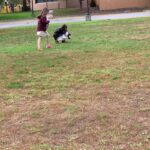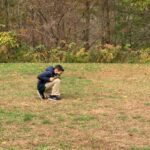STEM
At HudsonWay Immersion School, our approach to teaching the science, technology, engineering and mathematics (STEM) fields is hands-on and inquiry-based. HWIS incorporates elements of cooperative learning throughout its interdisciplinary curriculum. Students develop advanced biliteracy and bicognition because STEM subjects are taught both in the target language and English.
Every inquiry-driven investigation of a scientific concept encourages independent thinking, ownership of one’s work, and a sense of personal accomplishment. Collaboration, in their investigations with the classroom cohort, gives students a wide variety of perspective and fosters divergent thinking.
Technology
Beginning in kindergarten, students are assigned an iPad or Chromebook for in-class use. They are taught how to type in both languages and use technology as tools to undertake independent research, develop presentations, and collaborate on projects.
Students in the Mandarin program begin to learn Pinyin in Grade 2 which helps them in typing. Pinyin is a phonetic system used to characterize the sound of the characters.

Science Fish Spawning Study- Grade 5-6 Spanish
In the science unit on “plant and animal reproduction” our 5th and 6th grade students developed a model to compare the probability of spawning success...read more
Math
Hands-on learning plays a large role in how we introduce our youngest students to math. Adopting the Singapore Math curriculum, our youngest students’ first numerical experiences are sensorial and involve the handling of physical objects, paving the way for more abstract calculations further down the line.
To illustrate math concepts such as addition, students might be given two sets of objects and asked to put them together, thus giving them the opportunity to reflect on the process of addition. For multiplication, they might count out three groups of five counting chips onto three plates, illustrating, visually and tactilely, that five times three equals fifteen. And for division, the process would be reversed: students would distribute a certain number of counters to a number of their peers to determine how many groups of the same size make up their original number.

For elementary students, basic geometry can be explored through manipulatives. They may be given a number of square counters, with each square representing one square inch, and use their counters to measure various objects in the classroom. From this exercise, students can work backward, thereby arriving at an understanding of calculating areas and perimeters by fewer and more abstract steps.
Manipulatives are a more effective alternative to rote memorization, such as learning multiplication tables. They equip young mathematicians with the skills they need to truly understand these processes.
Read an article on developing students’ positive attitudes in the Math classroom – by Raelen Donahue.








